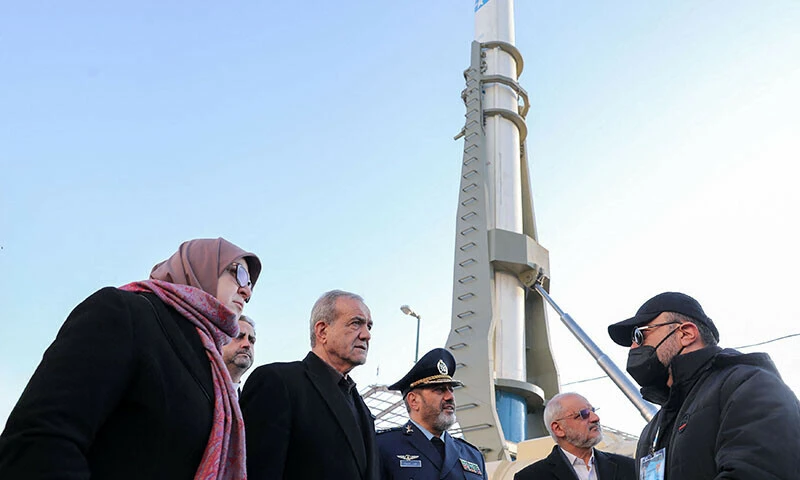In a lavish event, Iran displayed the Etemad ballistic missile, its most recent military defense capabilities in the face of rising regional tensions. President Masoud Pezeshkian was there when the missile, whose name means “trust” in Persian, was unveiled in Tehran. The exhibit highlights Iran’s dedication to developing its defense capabilities while negotiating difficult geopolitical obstacles.
Iran Etemad Missile: Features and Potentials
With a range of 1,700 kilometres, the Etemad missile is a major addition to Iran’s military arsenal, bringing vital targets, including Israel, within striking range and escalating regional security dynamics. The missile is the most recent development from Iran’s defence ministry and comes after the recent introduction of the Ghadr-380 cruise missile, which is renowned for its sophisticated anti-jamming capabilities. Taken together, these developments demonstrate Iran’s capacity to develop cutting-edge technology and demonstrate its determination to strengthen its national security.
Iran Etemad Missile: Showcase of Satellite Technologies
In addition to the missile, Iran unveiled three domestically produced satellites during the ceremony:
- Navak: A communication satellite that weighs only 34 kg and is intended to improve communication infrastructure .
- Pars-1 and Pars-2: improved imaging satellites for urban management and environmental monitoring. Iran’s focus on dual-use technology that meet both strategic and civilian objectives is reflected in these satellites.
Iran’s increasing aeronautical capabilities and intention to broaden its technological reach beyond military uses are demonstrated by this simultaneous demonstration of missile and satellite technologies.
Iran Etemad Missile: Timing and Strategic Context
The unveiling aligns with key national and international events:
- Iran’s national aerospace day honours the industry’s achievements.
- The celebration, which highlights national pride in technological accomplishments, takes place immediately before the Islamic Republic’s 46th anniversary.
- The announcement follows Iranian strikes against Israel during the Gaza conflict and comes amid heightened tensions with Western powers.
These developments highlight Iran’s strategy of leveraging military displays to assert its position amid shifting regional and global dynamics.
Iran Etemad Missile: International Consequences
Iran’s missile program has alarmed Western countries, who see it as a potential source of instability in the Middle East. President Pezeshkian emphasized that these changes are defensive in nature and are meant to discourage aggressiveness. Iran’s attempt to defend its military expansion while uploading its sovereignty and security interests is reflected in this position.
Iran Etemad Missile: Historical Context
Following the Islamic Revolution in 1979, which restricted access to American military equipment, Iran started its path towards military independence. During the Iran-Iraq War (1980–1988), the ensuing arms embargo further encouraged Iran to establish its own military. Decades of persistent work to overcome technological isolation are demonstrated by the Etemad missile.
Iran’s resolve to develop its aerospace and military industries while managing sensitive international ties is demonstrated by this reveal. It still requires striking a balance between displaying power and indicating a willingness to engage in dialogue.

